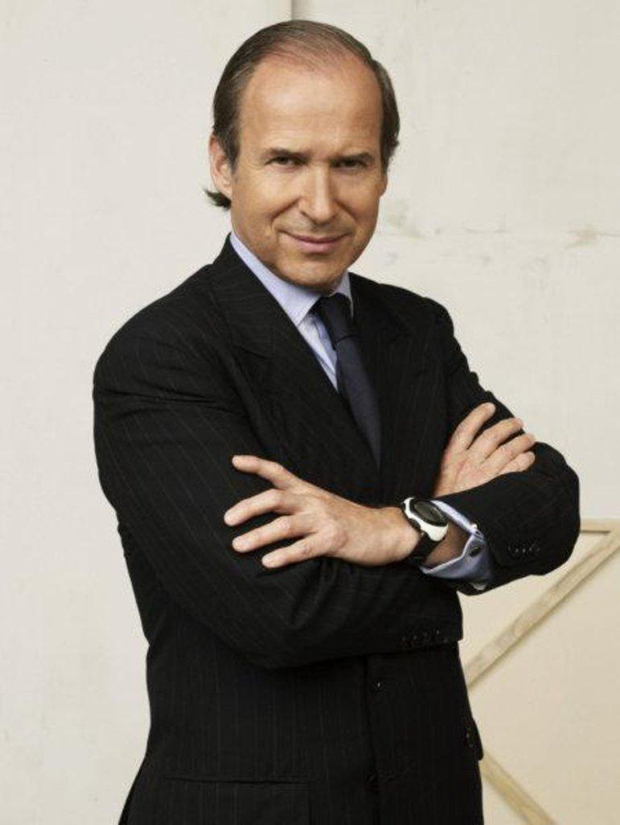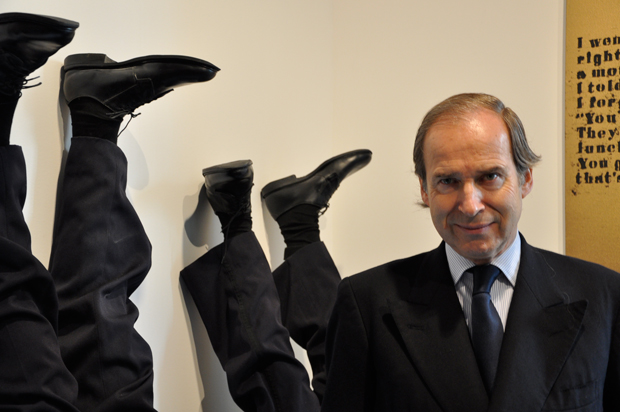
Ten questions for auctioneer Simon de Pury
The legendary boss of Phillips de Pury on anonymous bidders, Damien Hirst, Gallery Girls and Godzilla figures
Your personal collection includes works by Juergen Teller and Kelley Walker but also coffee mugs, skateboards and Godzilla figures. What gives you most pleasure? Well, your favourite piece is always the one you you’re obsessed with that you haven’t got yet. So all your focus goes on that search and hunt for the next object. I like collecting high and low. The pleasure doesn’t come from the most expensive work one has acquired. It’s an aesthetic quest, there’s no real common denominator between the various things that appeal to you. And yet at the end of the day every collection is a self portrait of the person who’s put it together. Collecting is a creative process in itself.
Say I have a budget of between £5,000 and £10,000 to spend on art what should I be buying? Even with young artists you can very quickly get to 10,000. So I think before determining what to buy you should start to identify what you’re personally interested in and what appeals to you. And what is a piece you would want to live with. The more you see and the more you follow you begin to get a feel for what prices may be exaggerated or temporary hype. The best thing is to only leap once you’ve looked around properly. The same amount of money can buy you something either of great quality or very limited quality given the particular market. That’s because you don’t have one particular market you have as many different markets as there are categories in the art market.
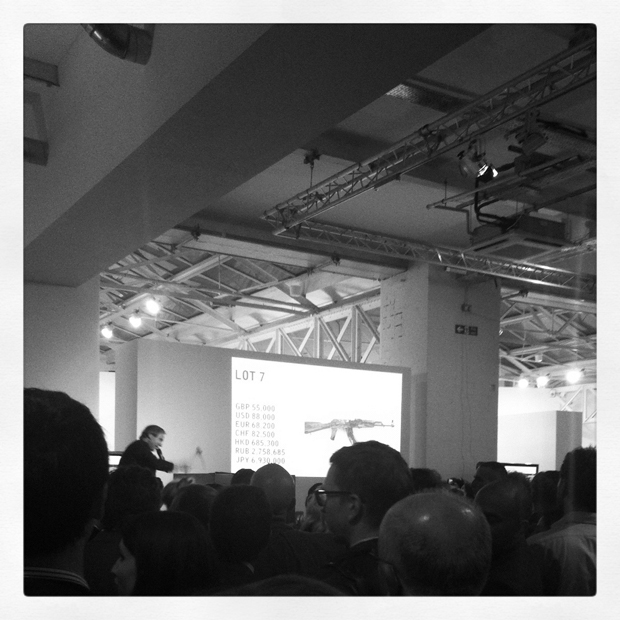
Do people still collect art for love rather than money? You have as many different motivations for collecting as you do collectors. There’s not one motivation. Even those collectors who buy purely out of love and passion at the end of the day are not insensitive when you tell them what has risen sharply in value. Everyone is happy to hear that! And, of course, it’s one way of vindicating your choice.
Just how anonymous are anonymous bidders? Occasionally you have some people who will not want it to be known that they are bidding. So they’ll let you know that on lot 7 if they have their glasses on it means I’m bidding and if I take them off it means I’ve stopped the bid. Other signals may include a bidder having their catalogue open or closed or scratching their nose. Of course you must know all this in advance. So you study your seating plan very carefully. And you know from the preceding exhibition who may be interested in what. It’s like a fuzzy picture that gets sharper and sharper the closer you get to the exhibition. By the time of the auction you have developed an impression of which works might do particularly well during the auction and which works might be more difficult judging from the interest and information potential clients have asked for. Obviously the auction house needs to know who is the person buying and if that person has never bought at auction before you need to get some financial information on them just to be sure they have the means to go for a specific object.
We all know about China, but what are the other hot new markets? The great thing about the contemporary art market is how global it has become over the last decade. Now you have collectors and artists in all parts of the world and there is no longer an isolation of an artist wherever he may be based. They will know what is happening in other parts of the globe through the internet and all the biennials that take place in Shanghai, Venice, Tiranna, Havana, in Istanbul, Tel Aviv and so on. The places that are economically strong are the places where there is particularly great collecting activity that often goes hand in hand with a creative boom - successful creatives buy a lot of art - so it’s easy to work out which are the places that have particularly strong scenes at the moment. Brazil is definitely a place where there is a lot of activity - both local and international.
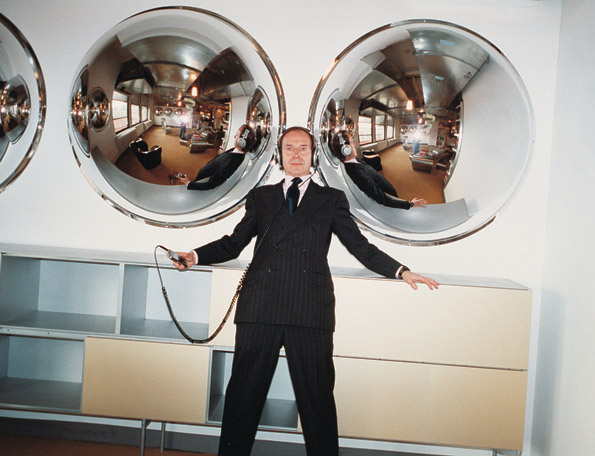
We hear you bought quite a few copies of The Art Museum Every now and then you have people who start getting interested in art but feel embarrassed to say they don’t know all that much about it. They ask me things like, 'if I want to learn a little bit more about it where should I start? The Art Museum is a great gift to somebody like that because you have an overall view and an ideal kind of introduction into it all. It’s a present that’s always appreciated.
So why should one consign a painting to Phillps de Pury rather than Christie’s or Sotheby's? Our great advantage is our focus on very few categories and through that specialistaion we can offer the best service in those areas, we are not sidetracked during the same week having to sell an old master painting or a renaissance bronze. It is that total focus that made us market leaders in our selling categories. We always take incredible care to produce the most beautiful catalogues. And so if you consign an artwork to us you know it will be presented at its very best in the catalogue - an important selling tool. The catalogue is often the very first contact that the potential client has with an artwork. At the same time we attach enormous importance to our exhibitions. Despite the fact that the exhibition doesn’t normally last more than four to seven days we install these shows as if they were museum exhibitions that will remain open for six months. We have such an intimate personal relationship with the art we sell that it’s a little like entrusting your children to some friends - you really want to be sure that people are going to look after your children well.
Do you watch Gallery Girls? No, I haven't seen it yet! You can’t download it over here in Europe. But I look forward to seeing it when I’m in the States. When I’m in New York next I’ll download an episode and let you know what I think.
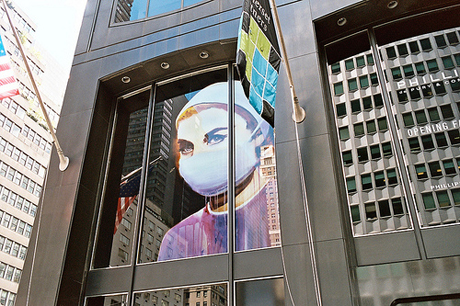
You took Richard Prince from around $50,000 a painting to $10 million. That must feel good We've always focussed on artists that we believe in. It’s a real statement if we include an artist who’s never been included at auction before. We're proud over the last 10 years to have introduced a number of international artists to the market place. Initially Richard Prince works were selling between $35,000-$75,000. If you told a collector at that time he’s a really great artist you should follow him they would not listen to you. Then when we sold a 'Nurse' for just under one million dollars for the first time we suddenly got the attention of some people. For some collectors it only starts to register once it reaches five or ten million dollars. Each price level starts to register with a different constituency.
Could you ever imagine a situation where the value of an artist’s work literally drops off a cliff. Let’s pick a name purely out of the sky – Damien Hirst say? Markets are lively things. No market just goes vertically up – there are always moments of re-adjustments depending on many factors. But if you analyse the art market from the 1850s onwards - because from the 1850s you have enough documentation - you can see that art has, on the whole, consistently gone up. However, you also have a constant evolution of taste and you can safely assume that certain things that are very much sought after now will not be so sought after 50 or 100 years from now. But there is a consensus that develops after a while over a certain artist. So you may have things that drop in value but they never fall off a cliff. The market of Damien Hirst, since you mention him, is very similar to the market around Andy Warhol at the beginning of the Nineties when everybody said 'oh, now it’s cooling down' and all of that; yet his second coming was much stronger than the first. We are at a time when brands are important and you have maybe 10 artists who are international brand artists and whose works are in important collections and institutions all over the world and when you have new collectors entering the art market they feel much more reassured to go after those main artists. So you can extrapolate that there will be strong demand for certain artists. Also, every year you have less major art works that become available and you have more people who potentially can go after them. Some doors close and others open.
